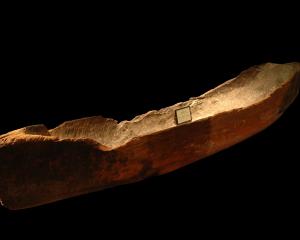

John Elder Moultray was born on August 6, 1863, in Edinburgh and arrived in Dunedin in October 1883 at the age of 19 with his father, the artist James Douglas Moultray, elder brother Henry (also an artist) and his mother Mary.
James Douglas Moultray was already a well-recognised landscape painter in Scotland. James’ reputation preceded him to Otago, where the family immediately became well known and James continued to paint. His paintings sell regularly in both the UK and New Zealand art markets.
Both John and Henry’s artistic education was partly from their father but they had also studied art in Edinburgh. Henry died in 1887 aged 35 and it seems that none of his work survives.
John painted both landscape and history paintings. History painting is a genre of painting that depicts scenes from historical narrative. As a genre, history painting was very popular in the 18th and 19th century European academic schools of painting, such as the Royal Scottish Academy where James had exhibited. Not all history paintings are necessarily an accurate depiction of events but John Moultray did go to some effort to research what really happened in the events he depicted. He travelled to the sites of important events, taking photographs and conducting interviews in the service of historical accuracy. He was well known for his depictions of scenes of the New Zealand Wars, and other British colonial conflicts. Looking at these paintings today, they are very colonial in style. Enemies look desperate and undisciplined, British soldiers look brave and heroic.
Pursuing a career as a journalist, John became South African War correspondent and artist for several New Zealand newspapers, including the Otago Daily Times, and travelled to South Africa for six months in 1899-1900. John sketched troop life on ship and the difficulties of caring for horses onboard, and wrote articles on troop activities. Like many who travelled to the South African War he was invalided home after six months.
The collection documents the growth of John’s life as an artist, but also the life he saw around him on his travels. John’s public life is well documented through published newspaper accounts, which can be found by searching Papers Past. The collection of papers at the Hocken offers more personal and in-depth documentation of his activities, work and thoughts.
Two volumes of shipboard diary record John’s life aboard Helen Denny, July to October 1883. Helen Denny brought British immigrants to New Zealand on many voyages. The diaries include detailed observations of life on a migrant ship and interesting events are depicted in delightful pen and ink illustrations. John took part in shipboard life to a great degree and enjoyed the adventure of travel as an 18-year-old. The writing and illustrations present his youthful, masculine view of events and activities.
A diary of a month-long trip with brother Henry over the summer of 1886-87 to the Whare Flat area near Dunedin is interesting because it uses photographs taken by John as he began to use the newer technology of photography as a method for preparation for painting.
Other papers in the collection include early correspondence, ephemera and typescripts of newspaper articles from the South African War.
The Hocken also holds 24 artworks by John Elder Moultray and seven artworks by James Douglas Moultray, as well as the plans for the family home in Heriot Row and a studio for John in Drivers Rd.
The collection
John Elder Moultray’s collection is part of the archives collection and can be viewed by visiting the Hocken. The collection reference is MS-4847. The collection is described in the Hakena catalogue.
- Anna Blackman is the head curator - archives - at Hocken Collections.












